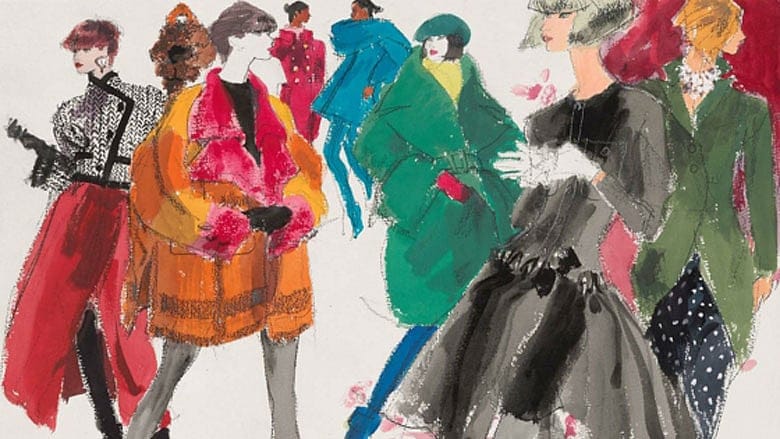Drawing out the soul of fashion with Kenneth Paul Block and MFA

The Museum of Fine Arts in Boston is hosting a small but elegant exhibit of Kenneth Paul Block's fashion illustrations. The collection of hand-drawn works from the man whose career helped define fashion at Women's Wear Daily and W Magazine is as much a chronicle of what fashion was, as it is a reflection of societal aspirations in American's post World War II era. In a time when photography captured the art of fashion, Kenneth Paul Block opted instead to use pencils and paint to interpret its soul. Block was the house artist for Fairchild Publications, owner of WWD&W, from the 1950s through the 1990s. In addition to that position, he held long-term commissions as an illustrator for Bonwit Teller, Bergdorf Goodman and Lord and Taylor.
Block's charcoals, opaques, pastels and color-saturated work fused fashion's statement of the moment with fashion icons of the era. Using sweeping strokes of movement, capturing gesture, posture, and sophistication, his illustrations personified the template of success. Kenneth Paul Block was the arbiter of taste because he captured the nuanced lifestyle of the world's most credible trendsetters at their best. Block's masterful use of pencils and brushes articulated style's convergence with life; he understood its tribal language while others merely observed it.

